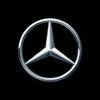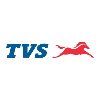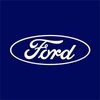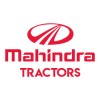
Tata Motors
Proud winner of ABECA 2025 - AmbitionBox Employee Choice Awards
Filter interviews by
Tata Motors Intern Interview Questions and Answers
9 Interview questions
Agile software development is a methodology that emphasizes flexibility, collaboration, and iterative development.
Focus on delivering working software in short, iterative cycles
Emphasizes collaboration between cross-functional teams
Allows for flexibility and adaptability to changing requirements
Incorporates feedback from stakeholders throughout the development process
Common frameworks include Scrum, Kanban, and Ex...
Lidar provides depth information which is crucial for tasks like object detection and obstacle avoidance, which cannot be achieved with just a camera.
Lidar provides accurate depth information which is essential for tasks like object detection and obstacle avoidance.
Cameras alone cannot accurately determine distances to objects, especially in challenging lighting conditions.
Combining Lidar with cameras can provide ...
BS-6 came before BS-5 due to the need for stricter emission standards and technological advancements.
BS-6 was introduced to address the growing concerns about air pollution and to meet international emission standards.
BS-6 engines are equipped with advanced technologies such as selective catalytic reduction (SCR) and diesel particulate filters (DPF) to reduce harmful emissions.
The implementation of BS-6 norms requ...
Selective Catalytic Reduction (SCR) technology is used to reduce NOx emissions.
Selective Catalytic Reduction (SCR) technology is commonly used in diesel engines to reduce NOx emissions.
SCR technology works by injecting a urea-based solution into the exhaust stream, which reacts with the NOx gases and converts them into nitrogen and water.
This technology is widely adopted in vehicles, power plants, and industrial p...
Major components of electric vehicles include battery, electric motor, power electronics, and charging system.
Battery: Stores electrical energy to power the vehicle.
Electric motor: Converts electrical energy into mechanical energy to drive the vehicle.
Power electronics: Control the flow of electrical energy between the battery and motor.
Charging system: Recharges the battery when connected to a power source.
Motor controllers are devices that regulate the speed, torque, and direction of electric motors.
Types include brushed DC motor controllers, brushless DC motor controllers, stepper motor controllers, and servo motor controllers.
Brushed DC motor controllers use a commutator and brushes to control the flow of current.
Brushless DC motor controllers use electronic commutation for more efficient operation.
Stepper motor ...
Cell selection process involves the recognition and binding of specific molecules on the cell surface.
Cells select other cells or molecules based on surface receptors
Receptors on the cell surface bind to specific ligands
Cell selection is crucial for processes like immune response and tissue development
Stress strain curve shows the relationship between stress and strain in a material under tension.
Stress strain curve is a graphical representation of the relationship between stress (force per unit area) and strain (deformation) in a material.
It typically consists of a linear elastic region, a yield point, a plastic deformation region, and ultimately failure.
The slope of the curve in the elastic region is the mate...
The laws of thermodynamics are fundamental principles that govern energy and its transformations in the universe.
First Law: Energy cannot be created or destroyed, only transferred or converted.
Second Law: The entropy of a closed system will always increase over time.
Third Law: As temperature approaches absolute zero, the entropy of a system approaches a minimum value.
Examples: A car engine converting fuel into mot...
Tata Motors Intern Interview Experiences
9 interviews found
TOPICs were related to electric vehicles and carbon footprint
(3 Questions)
- Q1. Major components of electric vehicles
- Ans.
Major components of electric vehicles include battery, electric motor, power electronics, and charging system.
Battery: Stores electrical energy to power the vehicle.
Electric motor: Converts electrical energy into mechanical energy to drive the vehicle.
Power electronics: Control the flow of electrical energy between the battery and motor.
Charging system: Recharges the battery when connected to a power source.
- Q2. Cell selection process
- Ans.
Cell selection process involves the recognition and binding of specific molecules on the cell surface.
Cells select other cells or molecules based on surface receptors
Receptors on the cell surface bind to specific ligands
Cell selection is crucial for processes like immune response and tissue development
- Q3. Types of motor controller
- Ans.
Motor controllers are devices that regulate the speed, torque, and direction of electric motors.
Types include brushed DC motor controllers, brushless DC motor controllers, stepper motor controllers, and servo motor controllers.
Brushed DC motor controllers use a commutator and brushes to control the flow of current.
Brushless DC motor controllers use electronic commutation for more efficient operation.
Stepper motor contr...
I applied via Campus Placement and was interviewed in Sep 2024. There were 2 interview rounds.
Simple mechanical engineering
(2 Questions)
- Q1. Stress strain curve in detail
- Ans.
Stress strain curve shows the relationship between stress and strain in a material under tension.
Stress strain curve is a graphical representation of the relationship between stress (force per unit area) and strain (deformation) in a material.
It typically consists of a linear elastic region, a yield point, a plastic deformation region, and ultimately failure.
The slope of the curve in the elastic region is the material'...
- Q2. Laws of thermodynamics
- Ans.
The laws of thermodynamics are fundamental principles that govern energy and its transformations in the universe.
First Law: Energy cannot be created or destroyed, only transferred or converted.
Second Law: The entropy of a closed system will always increase over time.
Third Law: As temperature approaches absolute zero, the entropy of a system approaches a minimum value.
Examples: A car engine converting fuel into motion (...
Interview Preparation Tips
I applied via Campus Placement and was interviewed in Nov 2023. There were 3 interview rounds.
Normal test. Had aptitude and dsa and C++.
(4 Questions)
- Q1. Queries on Projects that I have completed.
- Q2. Explain your projects.
- Q3. Why did you need to use Lidar when you already have camera.
- Ans.
Lidar provides depth information which is crucial for tasks like object detection and obstacle avoidance, which cannot be achieved with just a camera.
Lidar provides accurate depth information which is essential for tasks like object detection and obstacle avoidance.
Cameras alone cannot accurately determine distances to objects, especially in challenging lighting conditions.
Combining Lidar with cameras can provide a mor...
- Q4. What is agile software ?
- Ans.
Agile software development is a methodology that emphasizes flexibility, collaboration, and iterative development.
Focus on delivering working software in short, iterative cycles
Emphasizes collaboration between cross-functional teams
Allows for flexibility and adaptability to changing requirements
Incorporates feedback from stakeholders throughout the development process
Common frameworks include Scrum, Kanban, and Extreme...
(1 Question)
- Q1. Basic details about me.
Interview Preparation Tips
- DSA
Skills evaluated in this interview
MATH ROUND WAS THERE AND WAS EASY
(1 Question)
- Q1. HI HOW WARE YOU
Interview Preparation Tips
(2 Questions)
- Q1. Why BS-6 came before BS-5
- Ans.
BS-6 came before BS-5 due to the need for stricter emission standards and technological advancements.
BS-6 was introduced to address the growing concerns about air pollution and to meet international emission standards.
BS-6 engines are equipped with advanced technologies such as selective catalytic reduction (SCR) and diesel particulate filters (DPF) to reduce harmful emissions.
The implementation of BS-6 norms required ...
- Q2. What technology is used to reduce NOx emissions
- Ans.
Selective Catalytic Reduction (SCR) technology is used to reduce NOx emissions.
Selective Catalytic Reduction (SCR) technology is commonly used in diesel engines to reduce NOx emissions.
SCR technology works by injecting a urea-based solution into the exhaust stream, which reacts with the NOx gases and converts them into nitrogen and water.
This technology is widely adopted in vehicles, power plants, and industrial proces...
I applied via Campus Placement and was interviewed in Dec 2023. There was 1 interview round.
(2 Questions)
- Q1. Tell me about yourself
- Q2. What are the subjects you studied in MBA
(1 Question)
- Q1. About how the degree will be associated with the experience
I applied via Campus Placement and was interviewed in Jul 2023. There was 1 interview round.
(1 Question)
- Q1. Basic HR questions. Along with basic technical questions. About least count of devices. 5S and college projects and previous internships.
I applied via Walk-in and was interviewed before Mar 2023. There was 1 interview round.
(1 Question)
- Q1. 1. tell me about yourself 2. Why Tata Motors? 3. what are your expertise? 4. which field do you prefer in electrical?
Interview Preparation Tips
Top trending discussions






Interview questions from similar companies

I applied via Referral and was interviewed before Nov 2020. There was 1 interview round.
Interview Questionnaire
1 Question
- Q1. Education, experience and ambition
Interview Preparation Tips
Tata Motors Interview FAQs
Tell us how to improve this page.
Tata Motors Interviews By Designations
- Tata Motors Senior Manager Interview Questions
- Tata Motors Graduate Engineer Trainee (Get) Interview Questions
- Tata Motors Mechanical Engineer Interview Questions
- Tata Motors Quality Engineer Interview Questions
- Tata Motors Design Engineer Interview Questions
- Tata Motors Territory Sales Manager Interview Questions
- Tata Motors Sales Executive Interview Questions
- Tata Motors ITI Fitter Interview Questions
- Show more
Interview Questions for Popular Designations
Overall Interview Experience Rating
based on 13 interview experiences
Difficulty level
Duration
Intern Interview Questions from Similar Companies
Tata Motors Intern Reviews and Ratings
based on 59 reviews
Rating in categories
|
Senior Manager
6.7k
salaries
| ₹12.6 L/yr - ₹22.9 L/yr |
|
Deputy General Manager
891
salaries
| ₹25.4 L/yr - ₹45.4 L/yr |
|
Executive
833
salaries
| ₹3.9 L/yr - ₹11.3 L/yr |
|
Quality Engineer
422
salaries
| ₹1.5 L/yr - ₹4.5 L/yr |
|
Territory Sales Manager
386
salaries
| ₹12.4 L/yr - ₹22.6 L/yr |

Maruti Suzuki

Mahindra & Mahindra

Mercedes-Benz Research and Development India

TVS Motor
- Home >
- Interviews >
- Tata Motors Interview Questions














